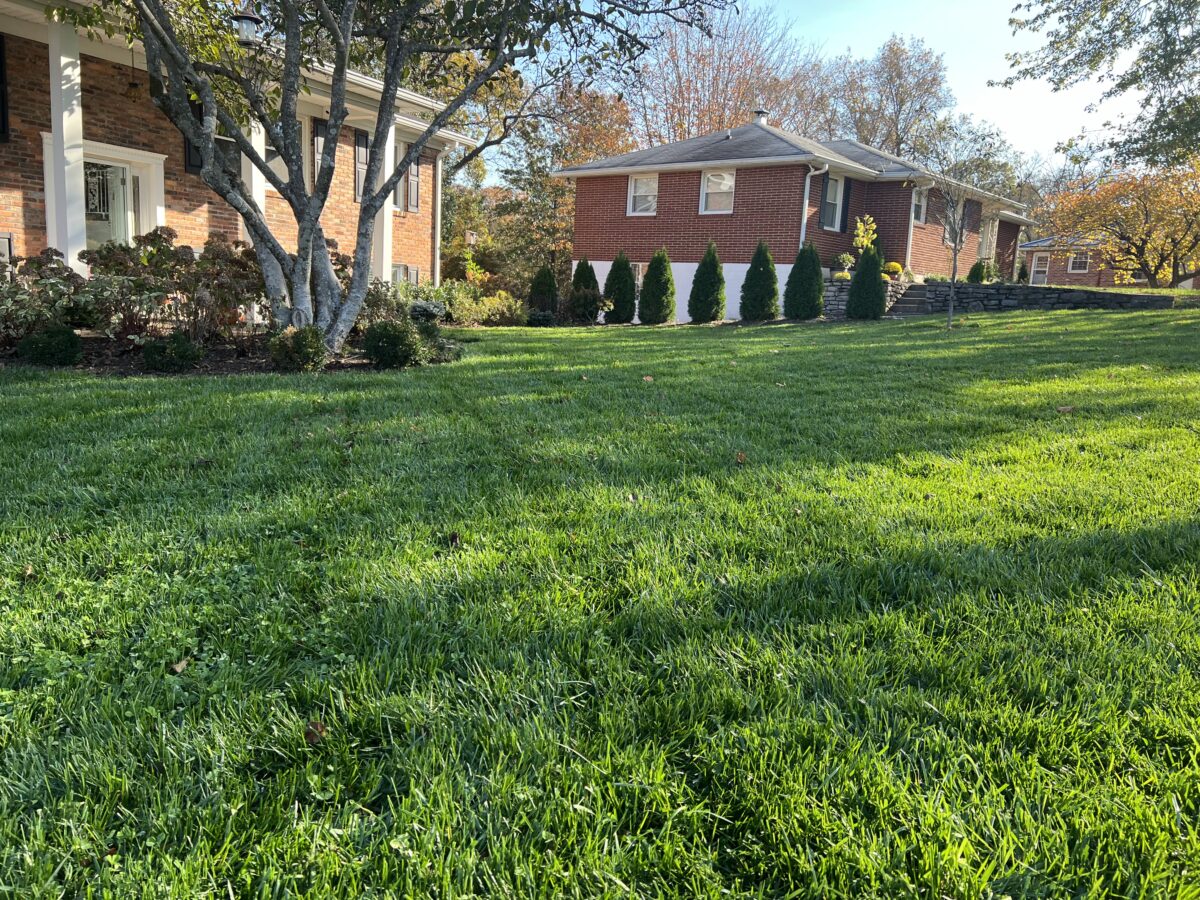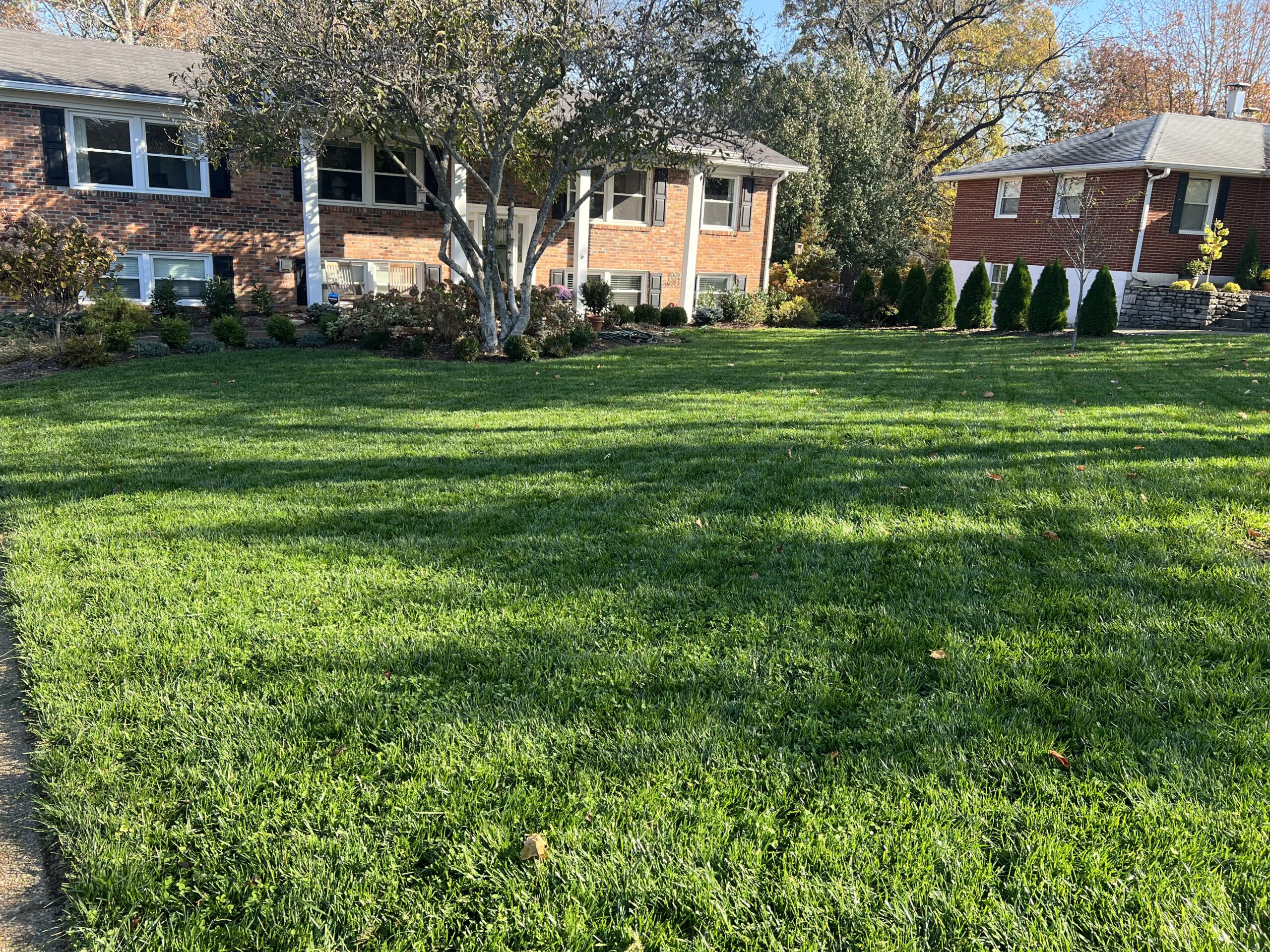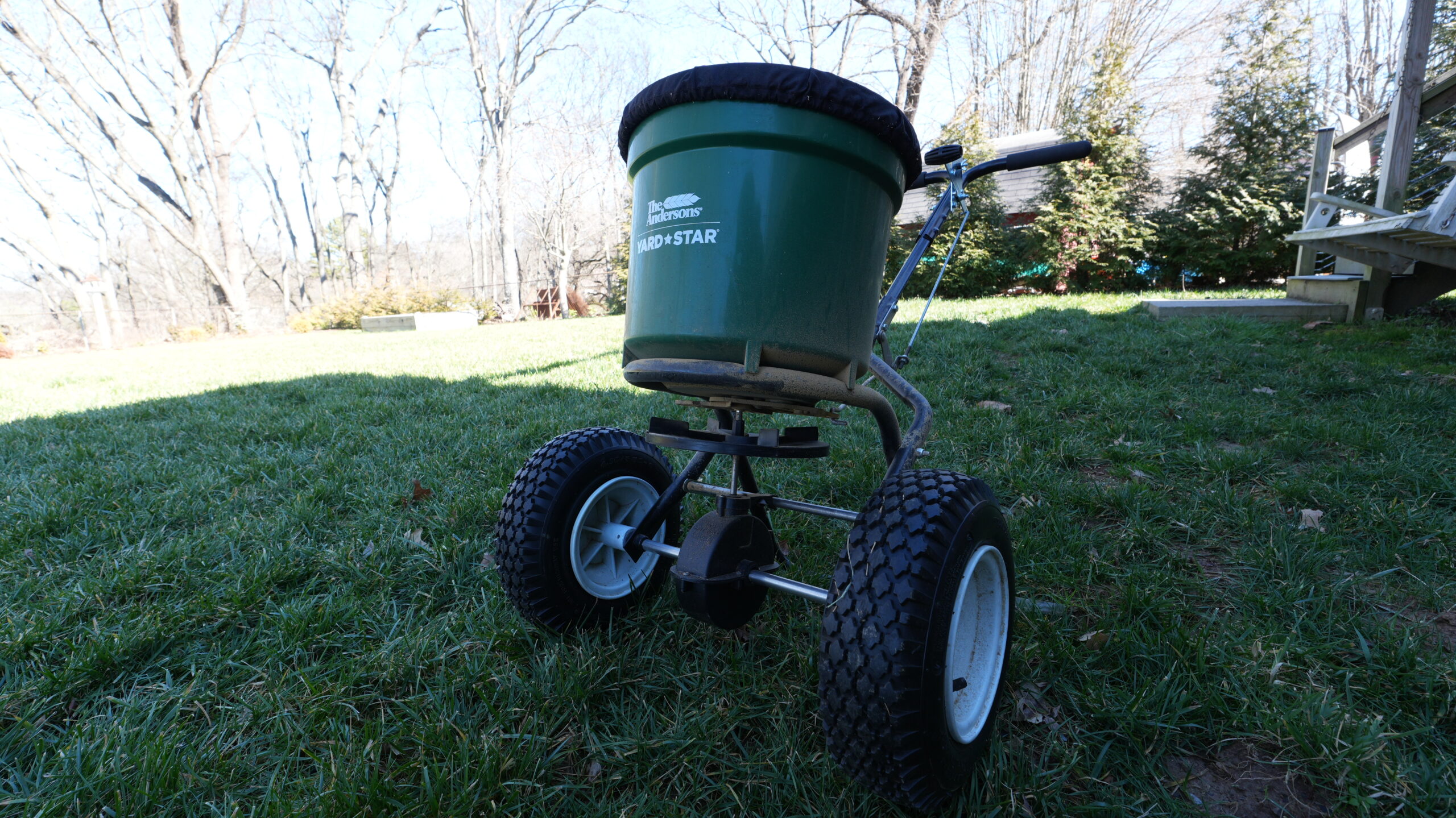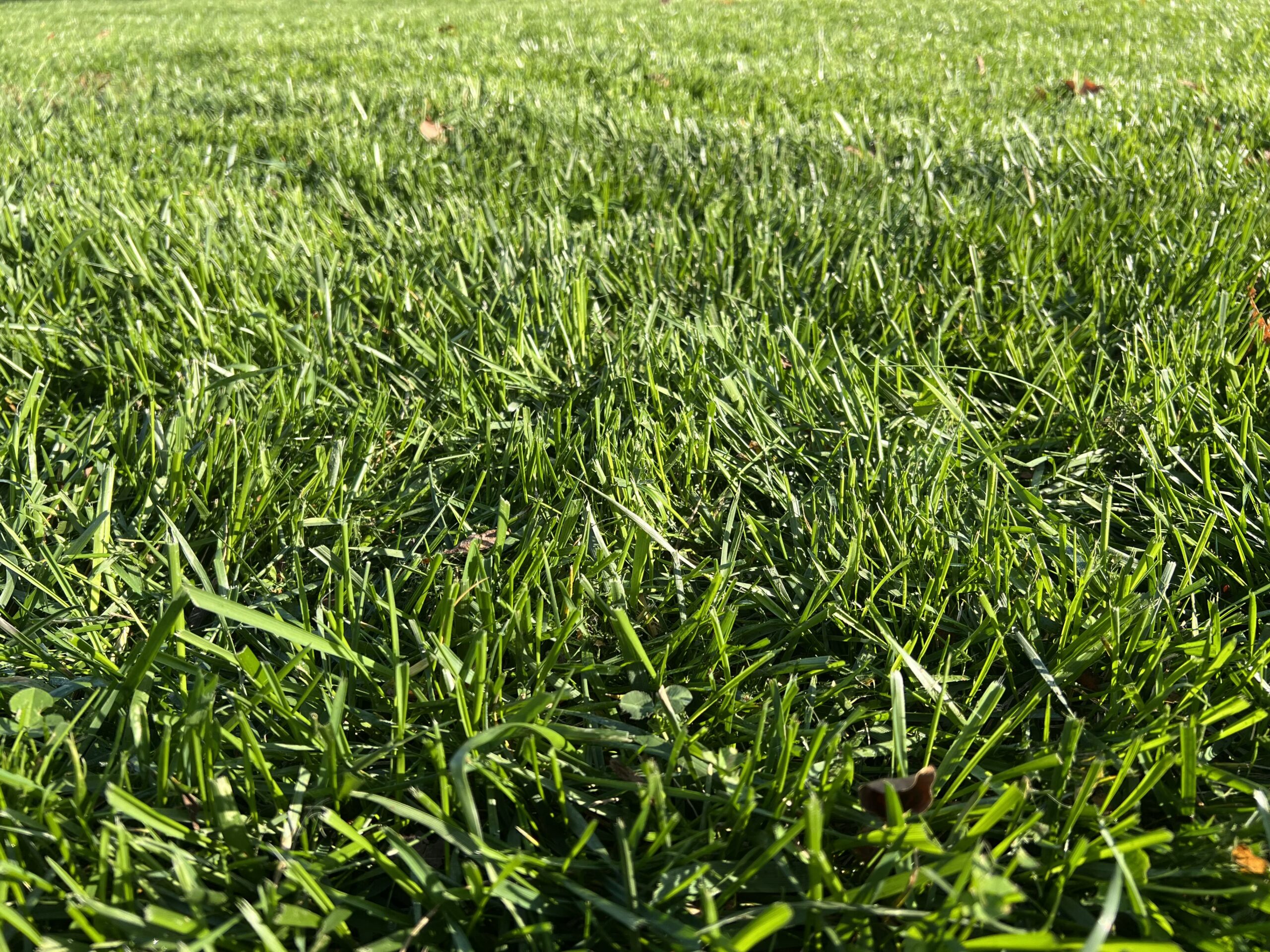The best fertilizer for your yard varies on where you live, but a nice balanced fertilizer like a 4-1-2 is great for most yards.

In order for your lawn to have a thick, lush green look naturally, you’ll need to provide it with some TLC. Fertilization is a significant aspect of this and probably the most important one.
Like all plants, grass needs certain nutrients to promote healthy and strong growth, and these are provided with the help of fertilizers. However, you should be aware that not every fertilizer is suitable for all grass types.
Believe it or not, this was news to me at one point.
For first-time gardeners, we understand that this can be tricky but we’ve broken it down by each type of grass. Don’t know your grass type? Keep scrolling…
Jump ahead to your specific grass type:
- Lawn fertilizer 101
- Best time to fertilize lawn
- Best Fertilizer for St. Augustine Grass
- Best Fertilizer for Centipede Grass
- Best Fertilizer for Zoysia
- Best Fertilizer for Fescue Grass
- Best Fertilizer for Bermuda
Lawn Fertilizer: NPK Ratio Explained
Additionally, all fertilizers contain a specific N-P-K (nitrogen-phosphorus-potassium) ratio, with each number specifying the richness of the nutrient. Furthermore, fertilizers typically come in a liquid or granular form – the former provides results usually in 2-3 days, while the latter is slow-releasing.

For that reason, if you’re starting up a lawn, you should pick out a grass fertilizer rich in phosphorus to establish healthy roots. In contrast, you’ll find that most fertilizers are rich in nitrogen since all of us are aiming toward a flourishing lawn. Nonetheless, you should pick one with a ratio that best suits your grass type – which we’ll get into later.
Best time to fertilize your lawn
Finally, you should be aware of the ideal fertilization time. Keep in mind that the time varies whether you’re starting up your lawn or nurturing your existing one, as well as the grass type. With that said, early spring is ideal for using starter fertilizer which is heavy in phosphorus. In addition, cool-season grass, like Fescue grass, benefits from fertilization during this time, including early fall.
On the other hand, warm-season grass, such as Bermuda and Zoysia, is best to be fertilized during the summer months, when their growth is very much in effect. Almost all grass types benefit from late summer to early fall fertilization – including in May, June, September, and October.

Oh – and make sure to water your lawn consistently after application. Follow that link for our watering schedule that we use.
Best Fertilizers for Every Grass Type: 2024 Update
Now that we’ve covered the basic grounds of a grass fertilizer, the next step is finding the ideal one for your specific grass type. Below you’ll find an in-depth look into the best fertilizer for various kinds of grass.
Best Fertilizer For St. Augustine Grass
St. Augustine grass requires a balanced N-P-K ratio fertilizer, typically 3-1-2 or 4-1-2. Remember that the ratio can vary depending on the soil conditions, climate, and other factors that are specific to your area. Additionally, it is best to use a slow-release fertilizer in contrast to a liquid one to help maintain a consistent level of nutrients in your soil and prevent excessive growth, pests, and diseases. However, if your St. Augustine grass is already established, a quick and regular spray of liquid fertilizer rich in nitrogen will give your lawn a lush, green look.
In terms of fertilization time, use a grass fertilizer in the early spring when the grass starts to green up or late summer when it goes dormant.
A great fertilizer for St. Augustine Grass is Andersons 16-4-8 (which follows the 4-1-2 guideline). You can grab it from Amazon for a good price as well.

Best Fertilizer For Centipede Grass
Compared to other grass types, Centipede grass generally prefers a lower nutrient level in order to thrive. For that reason, you should use a grass fertilizer with a lower nitrogen count and a higher potassium content. The ratio you need to look for is typically 1-0-1 or 2-0-1. Since this type of grass benefits from lower nitrogen levels, you should avoid using liquid-based fertilizers. Instead, go for slow-release formulas that will provide long-lasting nutrition.
The best time to fertilize your Centipede grass is in the early spring and once again in the early fall for optimal results. Be careful not to overuse it, though, since it can lead to thatch buildup – which will cause you to bust out the dethatcher.
You can grab a nice 16-0-8 fertilizer from Andersons for a really good price straight from their website.

Best Fertilizer For Zoysia Grass
If there is one thing you should know about Zoysia grass, it is that it definitely loves its nutrients! That said, you should pick out a grass fertilizer that’s very rich in nitrogen and has moderate phosphorus and potassium levels. Aim for those who have a 3-1-2 or 4-1-2 N-P-K ratio, similar to the fertilizers for St. Augustine grass.
While Zoysia can benefit from a quick-release formula for instant greenery, it’s recommended that you use slow-release grained fertilizer to prevent overgrowth. Additionally, make sure to test out your soil before you fertilize, since this type of grass prefers acidic soil. Therefore, you may need to include an amendment like sulfur to lower its pH level.
Like most grass types, Zoysia grass mainly benefits from fertilization in the early spring and late summer.
Zoysia fertilizer can be found in the appropriate ratio using Andersons PGF complete – which you can buy on Amazon if that’s more convenient.
Best Fertilizer For Fescue Grass
Like St. Augustine and Zoysia grass, Fescue grass typically grows in the same conditions; hence it benefits from the same formula of fertilizers. With that in mind, you should pick out a fertilizer with high levels of all the essential nutrients, typically with a 3-1-2 or 4-1-2 ratio. Furthermore, if you’re establishing a lawn with Fescue grass, you may want to pick up a grass fertilizer that’s amped up with potassium and phosphorus to ensure a healthy root system. We highly recommend using a slow-release formula to provide a steady supply of nutrients over time.
To prevent Fescue grass from weeds and overgrowth, fertilize it during the spring months, generally every three to four months. Make sure to give your lawn plenty of water at least once a week!

Usually around early March and late September (after aerating, dethatching, and overseeding), I’ll bust out some Andersons fertilizer and use that to get my lawn started. I get mine off on Amazon for a great price.
Best Fertilizer for Bermuda Grass
As with its other counterparts, Bermuda grass thrives in lots of nitrogen which it uses to form its thick, green blades. Therefore, you need to pick out a fertilizer rich in this specific nutrient and potassium. The optimal ratio for this specific grass type is 3-1-2; however, if there’s no chance of frost, you can use fertilizers with higher nitrogen levels.
The timing of fertilization for Bermuda grass is of utmost importance. Generally, it’s recommended to fertilize it every 4 to 6 weeks while growing during late spring until early fall. But, you should stop about 6 weeks before the expected fall frost, in order to prevent growth that can be damaging during the winter.

For Bermuda Grass, the best fertilizer to use is Andersons PGF complete – which is available straight from Amazon.
Wrapping it up: Finding the right lawn fertilizer
I hope that this guide will serve you in picking out the ideal grass fertilizer for your lush lawn. If you want to read more articles related to taking care of your yard, check out some other posts, like how to get rid of invasive grasses in your lawn.
Or if you’re looking to find a nice spreader to evenly distribute the fertilizer, check out our post about broadcast spreaders vs drop spreaders.
Why we started The Lawn Review
We started The Lawn Review out of frustration. We couldn’t find clarity around what type of products were actually good and reliable. All the fertilizers we tried didn’t work. We ended up with a dying lawn, wasted time, and wasted money.

So we started buying and reviewing lawn tools and figuring out which ones were the best. And now we’ve moved onto actually keeping that lawn looking nice all year around.
We’ve spent thousands of hours building this content for people just like you and me – normal people.
Essentials of lawn fertilizer
As we stated earlier, all plants require nutrients to thrive, with the three essentials being nitrogen, phosphorus, and potassium. Each of these essentials plays its own vital role – nitrogen is responsible for the outside look or the greenery of your lawn; phosphorus promotes healthy root growth, while potassium provides an all round-coverage.
In terms of lawn care, you’ll mostly want to look for a nitrogen-rich grass fertilizer in order to achieve vigorous, lush green growth. On the other hand, phosphorus and potassium can be already found in your soil (depending on your region), and overfertilization in these nutrients can do more harm than good.
With that in mind, it’s best to find out your type of soil beforehand to choose the best fertilizer. Lawn fertilizer is different from fertilizer used for plants, like rose bushes.



